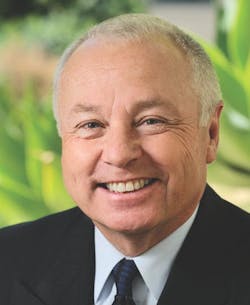Whenever Larry Webb participated in a home builder conference panel discussion about private versus public, he would expound on the virtues of being privately held. After leaving John Laing Homes in 2008, Larry and three other former John Laing executives started a new company during the depths of the housing crash in 2009. The New Home Company eventually attracted capital from private equity investment firms and grew to build in 22 communities on its own and in joint ventures. Then the builder completed an IPO in January 2014 and raised $86 million.
Q: Why did you go public?
A: We just came to the conclusion within the last 18 months that we had a lot of opportunities to continue to grow the business. We have this great team of people, and what we were constrained by was access to capital and access to well-priced capital, and that is what going public does for you. It allows you to expand and grow your business, and you’re only limited by the opportunities you can come up with. If we were going to stay a relatively small company with two or three housing programs in each area, then I would’ve stayed private. But we own or control over 6,000 lots now. In California that represents a significant amount of capital, and we really could not take advantage of those lots unless we really got a big influx of money, and there were only two ways to do that. One was to go public; the second was to attract a large private investor. I’m still an investor in this company, and I didn’t want to be diluted. I also didn’t want a boss or a big investment group that would basically tell me how to run the company. By being public, I’m the chairman of the board. I have an independent board, and they understand what we do and are very supportive. In a sense, this move kind of gave me the best of being private and public. I’m still in charge, and I still have a major investment in my own company, but I have access to much cheaper capital and much more capital than I ever would have in the private sector.
Q: Have any notions you had about being public changed?
A: I knew the reporting was a lot more complicated and onerous than what a private builder goes through. I probably didn’t recognize how much time you have to spend on that. That’s one, but it’s something we can deal with. On the other side, prior to this I had three other customer groups besides my partners, so those were the four ownership groups that I reported to. Now we’ve sold more than 8 million shares of stock, so more of my time is spent communicating with all different kinds of investors, and I have to be more aware of everything I do. You know, I have to be quiet. I’m not allowed to speak to people. I used to be able to say whatever I wanted whenever I felt like it. In today’s world, I probably wasn’t as cognizant or aware of the restrictions and the reasons for the restrictions, and I’m learning that. I’m learning that if I predict something in the future, and someone buys my stock because of me getting on a panel somewhere, and it doesn’t happen, I could be liable for that. So I’m a lot more aware and a lot less flip than I used to be. I’m still flip, but not as much as I used to be.
Q: What are your expansion plans?
A: When I look at our company and people, it seems to me that our competitive advantage is in markets where land is constrained, and where you get rewarded for thoughtful architecture and planning. Along with that is building in markets with job growth. That works very much for the Bay Area, Southern California, and Sacramento. When I look beyond that, to Phoenix, I don’t mean outside of Phoenix. I mean the inner loop of Phoenix, the Scottsdale area, and Paradise Valley. Along with that Seattle, Portland, and maybe Denver. So it is clear that those are areas I am interested in. But with the proceeds from the IPO, maybe all the money we raised will go to already identified projects in California. We are still considering these other options. It may be 12 months away, it may be sooner. We’re really not sure yet. But the majority of the money that we are focusing on raising was for California projects that we already identified. PB
Sign-up for Pro Builder Newsletters
Get all of the latest news and updates.
